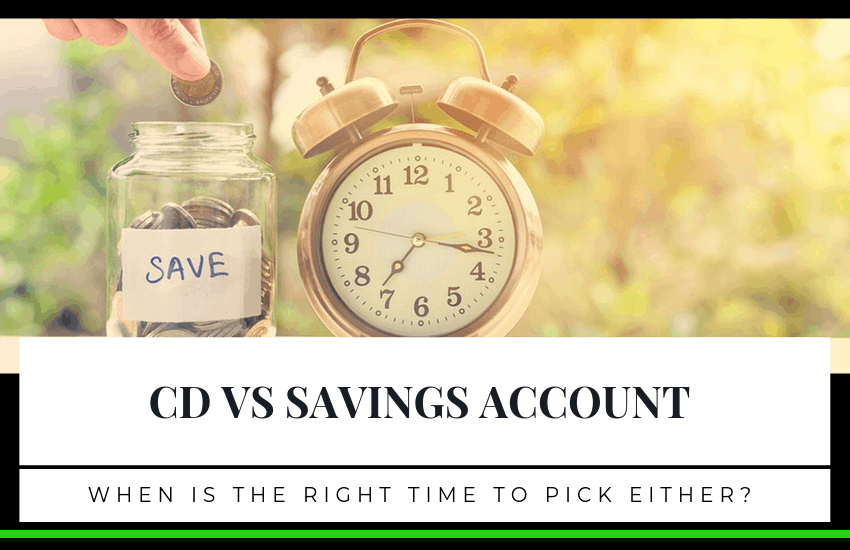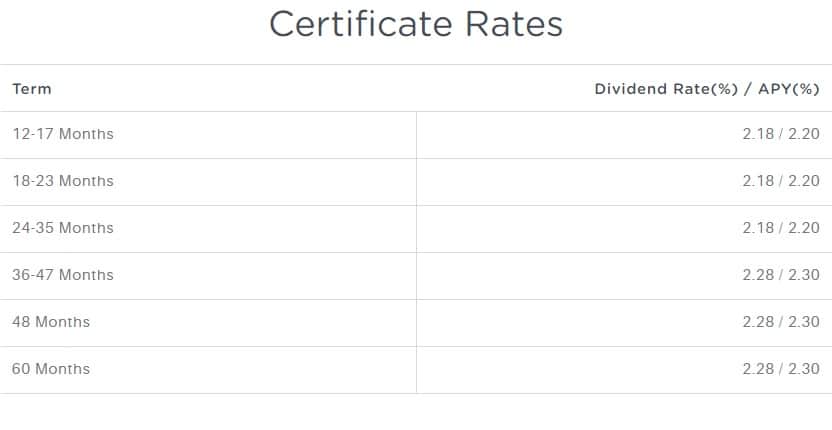- Personal Capital vs YNAB: Which Tool is Best? - July 5, 2020
- How to Invest 50K: Investment Ideas for 50,000 Dollars - April 26, 2020
- Fidelity vs Etrade: Which is the Perfect Online Brokerage Platform for You? - April 10, 2020
Do you have some money that you would want to keep away and then spend it after some time? You have a few options in such situations, and it helps to understand them if you’re going to pick the best one.
Savings accounts and Certificate of Deposits (CDs) are very popular options for keeping funds you might need later. However, they have different features that you should be aware of. It is easy to go down and list why you should pick either, but you are better placed to make this decision once you get more information about the two.
Here, we will break down savings accounts and CDs, highlighting all the important aspects about them so that in the end, it becomes clear when you should use either.
Read on…
Main Differences Between CD vs Savings Account
The Main Differences Between CD vs Savings Account are:
- CD’s have higher interest rates than Savings Account, whereas Savings Account may not have an interest rate at all
- CD’s may have a penalty if you want to withdraw the money before they “mature”, whereas Savings Account balances are always available for you
- CD’s do not allow you to withdraw money from ATM’s or make electronic transfers, whereas Savings Account allow you to withdraw at any time from ATM’s, make online purchases, and electronic transfers
- CD’s interest stays the same from the time you purchased it and not change throughout the process, whereas Savings Account’s interest rates can change according to Federal Funds Rate
Savings Account
Most of us already have savings accounts. When you visit a bank to open an account, the attendant will recommend that you open a current and savings account. The current account is designed to manage your day to day cash flow, while the savings to keep away money that you do not need.
A savings account is a bank account that allows you to deposit money safely and withdraw it when you want, as it earns interest over time. Most financial institutions offer savings accounts since the idea behind them is straightforward. They are insured by FDIC, and the risks are minimized.

The Federal Deposit Insurance Corporation (FDIC) is a government agency that is tasked with protecting consumer safety when dealing with banks. Banks make money by lending out deposits to earn profits. If these investments go south, you will be in good shape if the account is FDIC insured. The agency will see to it that your funds are reimbursed.
There are many more details regarding FDIC insurance and the limits and always check if your account falls under the insured category. The rate of interest paid on deposits widely varies with the nature of the financial institution. Savings societies typically offer better rates than traditional banks. You should keep a keen eye on the interest rates as they change over time, depending on the economic situation.
Opening A Savings Account
Savings accounts are simple to open, and this can be done in less than an hour. The internet has made things easier, and you open one online if the financial institution holding the account has this functionality. However, you might be required to visit the brick and mortar branch for them to collect your biometric details.
If you want to open one, take your time, and find a suitable financial institution. We will explain more on how to land the best one further below. An excellent way to do it is by reviewing the interest rates, minimum balance, and any other requirements.
If you are looking at other financial institutions such as savings societies, ensure that you are qualified to join. Most of these institutions are formed to serve a particular group of people and might not accept applications from the general public. You can always find this information on the internet, or by giving the institution a call and making a direct inquiry.
You will find the financial institutions offering a few variations of savings account. The banking industry has evolved, and institutions are tailoring accounts to meet customer needs. This way, ensure that the account you are opening suits your needs. It might be a slight variation from what is offered to the general public, but if it fits, you should be good to go.
Once the account requirements have been settled on from the bank’s side, you will be required to gather some documents to facilitate the process. These include your identification document, social security number, and mailing address. You can open an account online or do it physically at the bank’s branch. You might be required to deposit an initial amount to facilitate the processing of your debit card and activate the account.
Usually, one is required to be 18 years and above for them to open a savings account. This is a general requirement, and there are many more. They all depend on the financial institution. There are options for people under the age of 18, and banks can provide junior accounts where a guardian is designated as the signatory till they turn 18.

Using A Savings Account
You have opened a savings account, now what next?
It has been mentioned that savings accounts are suitable for keeping away money you will need later on. The interest rates might not be as much unless you are depositing huge sums, but these accounts are risk-free as long as they are FDIC insured.
Using them is straightforward since you can collect as much as you want. If you wish to save diligently, it is recommended that you restrict withdrawals from the account. This is one requirement you need to check when opening a savings account as it can keep you from making unnecessary withdrawals.
Banks offer different types of restrictions, depending on the nature of the account. You might set the withdrawal limit to only thrice a year and allow the bank to charge you a considerable transaction fee if you exceed this amount.

Savings accounts come in handy if you want to make a massive purchase in the future, for instance, a car or house. They offer you a safe place to collect this money until you hit the intended target. If you have an upcoming expense, for instance, a month-long vacation, it helps to save for this trip. You can save little by little so that by the time you want to go on vacation, you will have enough money.
In some cases, savings are our first line of protection from emergencies that are always imminent. We all get in situations where we need significant sums of money, and with some money in your savings account, you can always get around such. You can access funds in a savings account quickly, and this can help you to sort the emergency rather than having to take a loan.
Most financial institutions offer you the opportunity to hold multiple savings accounts under one name. This comes in handy when you have different types of savings, for instance, a vacation, car deposit, and house purchase savings account.
The motivation behind having many savings accounts vary significantly, but ensure that you do not spend too much maintaining them. Multiple accounts allow you to keep tabs on the funds you have for various purposes.
The Cost of Running A Savings Account
Opening a savings account is free in most financial institutions, but you will pay to keep the account. This way, ensure that you know how much it will cost you to have the account. These fees vary with the financial institution where the account is held and features of the account.
Accounts have minimum balances that you need to maintain. If you fail to do this, the institution will charge you a penalty in the form of a monthly or yearly fee. This amount will be deducted from the account, and if the balance is not sufficient, it will be charged as an overdraft.
Credit unions are a bit different from banks in this aspect. They are not profit-oriented organizations, and their rules might be a little bit lenient compared to the banks. They impose the ‘minimum balance rule’ differently.
Most will put a specified amount that you need to deposit when you set up the account. The account will remain inactive until you deposit this amount. You will not be allowed to withdraw this amount as long as you operate the account, but if you close it, you will get the money back.

Other unions, especially ones that are specifically designed for savings, will not charge you for having an account with them. This could also be the case if you have a checking account with them.
In a nutshell, the cost of running a savings account is an important thing to look at. Do not overlook the details regarding this and try to get a clear picture of how much you are paying to keep the account.
Making Deposits to Your Account
You can start putting money in your savings accounts in different ways as discussed below;
- Internal Transfer – If you have two accounts, a checking, and savings one, making deposits can be as simple as transferring from one to the other. You can do this online or by visiting the bank branch. If you are employed and get paid through a bank, the money will be directed to a checking account. From here, you can transfer money into the savings one and remain with what you need to pay for the bills until the next payday.
- Cash Deposits – If you come across some cash, you can use cash deposits to contribute to your savings. You can do this by visiting the financial institution branch or using ATMs.
- Cheques – You can deposit a check into the savings account by visiting a bank branch. If the institution allows you to do this online, the better since you won’t be required to visit the office.
- External Transfers – You can receive payments from online accounts or ones held in other financial institutions. For instance, someone might want to pay you some money, and if you give them your savings account number, they can wire the funds right into the account.
If you have several sources of income, it is easy to designate one of them to your savings. Here, the saving will be easy since you won’t be required to handle the funds at any point.
Withdrawing Funds from a Savings Account
Savings accounts are not designed to accept frequent withdrawals. This way, ensure that you resist the urge to keep on withdrawing money from this account unless it is urgent. The authorities specify that you should not make more than 8 withdrawals from your savings account every year. Some financial institutions have reduced this amount to as little as three to ensure that these accounts do not beat their purpose.
To use the money, you will have to move it, mostly to a checking account or get cash. You can withdraw it in cash from an ATM machine or at the bank branch if the amount is huge.
People are moving away from money due to the obvious disadvantages of using it, and transferring this money to your checking account is the best option. Here you can make electronic payments, even if they are huge, or you can spend the money using your debit card.
In some cases, you can request a checkbook from the financial institution and use checks to make payments.

Tips for Picking the Best Savings Accounts
1. Set Your Savings Goal
Savings accounts have different purposes. Before opening one, determine what you expect at the end of the savings period.
- Do you need a savings account to raise the money required to buy a car or home?
- Do you want to have a savings reserve account that will be your first line of protection in case of an emergency?
- Are you expecting a windfall and need a place to keep the money safe for a few years?
These are the questions that will help you to know what to expect from a savings account. All the financial institutions have accounts with varying features, and once you have a clear idea of what to expect, finding a suitable one should be straightforward.
2. Think Outside the Box
When the term ‘savings account’ is mentioned, most of us think about the traditional banks. Well, the financial industry has changed, and it is easy to find suitable savings account from a financial institution that is not a bank. It helps to think outside the box and analyze these non-conventional banks since they might offer you a better deal.

Online banks are a notable option as they offer better interest rates and low minimum balances. Their fees might also be low when compared to traditional banks. It is easy to manage your deposits and withdrawals on an online bank since all the transactions are done on a phone, tablet, or computer. These banks can offer better rates since their overhead expenditure is lower.
Credit unions and community banks are also an excellent option to look at. They are not profit-oriented institutions and will not rip you off. They aim to offer you a safe place to keep your money and generate a little income to sustain their operations. This way, their interest rates will be higher, and overhead fees lower. They are mostly run by members, which makes them more appealing than traditional banks.
3. Compare and Contrast
All the financial institutions will offer you a combination of different rates, fees, and convenience. It is easy to be overwhelmed by this wealth of options since you can find one thing that is good on a bank and then find the rest are bad. You might not land a perfect bank, but comparing will help you find one that gives you the least compromise.
The internet is a great resource to use when comparing the features of different banks. You will find several sites recommending various banks but go an extra step and visit the original websites of these institutions to determine whether this information is accurate or not. Some of the sites are paid to promote the banks and will review them in good light just for the commissions.
Comparisons will take a lot of time, but they are necessary for finding the best fit. Look at the features of the bank and review what people are saying about the account. At times, it is vital to analyze an account from a client’s perspective to know more about the savings account.
4. Read the Fine Print
Financial institutions are very witty when it comes to presenting their savings accounts to potential clients. They will advertise the accounts with the best features in bold and colossal font to attract you.
They will not give you a lot of details on the features of the accounts that are not favorable. It is easy to get carried away by these flashy advertisements and quickly sign up for a savings account.

Go through the fine print as this is what determines whether the account is good or not. Read through the terms and conditions extensively so that you know what you are signing up for. If you have any questions, ask the customer service representative for clarification.
Some of the critical things to look at in the fine print are the consequences when you fail to maintain the minimum balances and abide by some of the account rules.
5. Understand the Fees
The cost of running a savings account is arguably the most vital feature to focus on. These fees will be explained in complicated terms, and if you are not familiar with banking terms, it is hard to get an idea of how much you will pay to have the account.
Out of the fees, look at the transaction fees, maintenance, withdrawal, and ATM fees. Savings accounts are not designed to accept frequent withdrawals, and this brings out the monthly maintenance fee is perhaps the most important one.
Check at any limitations on withdrawals and the penalties to be paid if you do not follow these limitations. The interest rate is also a notable feature and calculates how it is compounded.
Once you have checked all these fees, do not stick to the percentages and try to calculate what they bring when you save a certain amount, say every month. It is easy to find an account with a reasonable interest rate but a high monthly maintenance fee that reduces the money you get at the end of it all. When you have a clear picture of the impact of these fees on your money, it becomes easier to decide.

6. Embrace Technology
We live in a technological era, and it is pointless getting a savings account that is similar to the ones offered twenty years ago. Technology is meant to make our savings easier and check whether an account has automatic and online features that add to the convenience.
Check whether you can make deposits online or have them automated from your checking account. It is better if the bank can alter you in case your balance falls below the minimum. Can you manage the account on an app or through a secure web portal? In this age, you should save without having to visit a brick and mortar bank branch thanks to the power of technology.
Some vital things to consider when selecting a savings account have been mentioned. Do not rush over the decision as an unsuitable account can really hinder you from achieving your goals.
My Top Recommendations
American Express
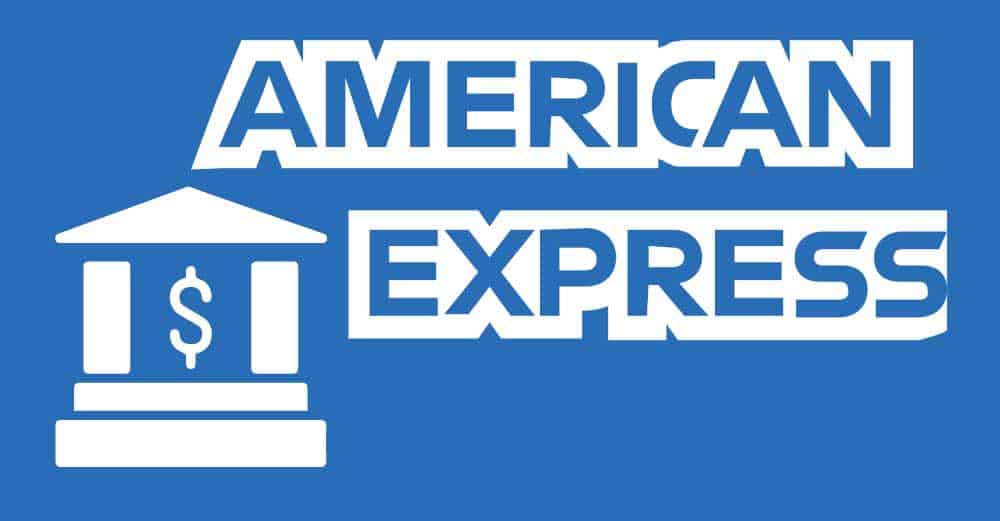
American Express has been a significant player in the financial niche for a long time. It offers a wide variety of financial products and services, and it is no surprise seeing it among the top recommendations. Its online savings account is among the best if you look at the terms and conditions offered.
The savings account has no minimum balance or monthly fees, and it is easy to connect it to your accounts held in other financial institutions for transfers. The interest rate as of October 2019 is at 1.90% APY.
Discover
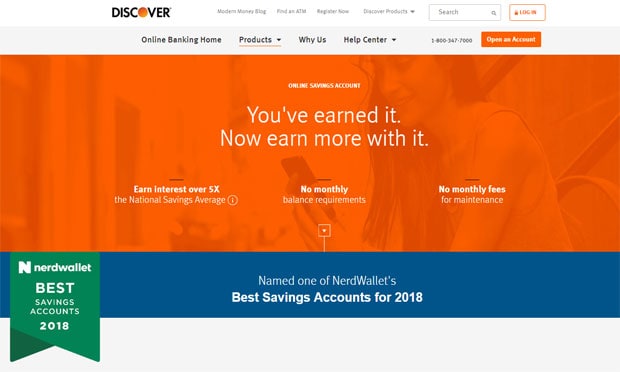
This company is acclaimed for its credit card facilities as opposed to the savings. It offers online checking and savings accounts through Discover Bank. The savings account is low cost and will not deduct any amount even for incoming wire transfers.
It gives you an option of money market savings accounts, which is not commonly seen in the savings industry. The interest rate as of October 2019 is a1.90% APY.
CIT Bank
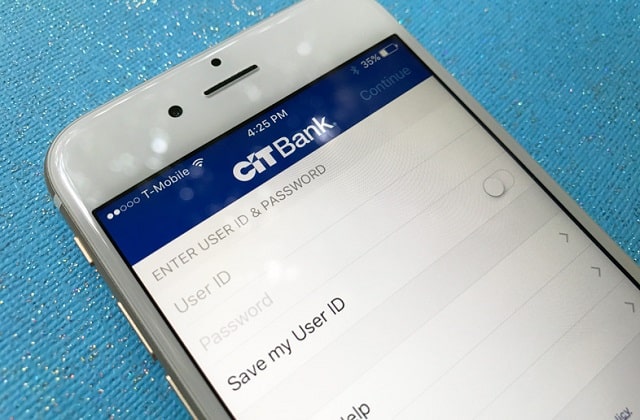
This is arguably the best savings bank with a vast network of branches spread across the states. Note that it is different from Citi Bank. You will have to deposit a minimum of $100 when saving and can manage your accounts online.
It has minimal fees for account use, and it is easy to transfer money from other banks. It has a slight twist of the conventional savings account called the custodial account, where you can save money for your children. The interest rate as of October 2019 is 2.20% APY.
Marcus by Goldman Sachs

This financial institution offers more than investment banking, something that it is widely acclaimed for. It recently ventured into banking, and it offers high yield savings. There is a maximum limit of $1 million per account, and the nature of this account makes it a suitable fit for savings intended to act as your first line of protection in case of an emergency. The interest rate as of October 2019 is 2.00% APY.
Alliant Credit Union

This is one of the top options if you are looking for a savings account in an alternative financial institution. Alliant Credit Union offers mobile cheque deposits, quick online transfers, and lets you open up to 19 different savings accounts under one name.
This feature makes it easy to have savings for various purposes without having to open multiple accounts. Membership to this union is limited to employees and retirees of specific companies, relatives of employees, or through making a small donation to nonprofit Forster Care to success.
It has a minimum balance of $100, and the interest rate as of October 2019 is 1.90% APY.
Certificate of Deposit (CD)
CDs are an alternative way of savings if you are not intent on using traditional savings accounts. This section will explain what they are and bring to light some of the crucial things you should know about them. Read on;
What is a Certificate of Deposit?
A CD is a product offered by financial institutions that offer an interest rate premium in exchange for a customer agreeing to deposit a lumpsum untouched for a set period. Most consumer-based financial institutions provide them, but the agreement terms vary from one to another.
In most cases, the agreed period is relatively long, spanning from 6 months to over 5 years. The interest offered is much more than what the money would have accrued had you saved it in a regular savings account.
The Annual Percentage Yield is higher since the bank can use the money for long term investments as they are assured that you won’t come back for it before the agreed period elapses.
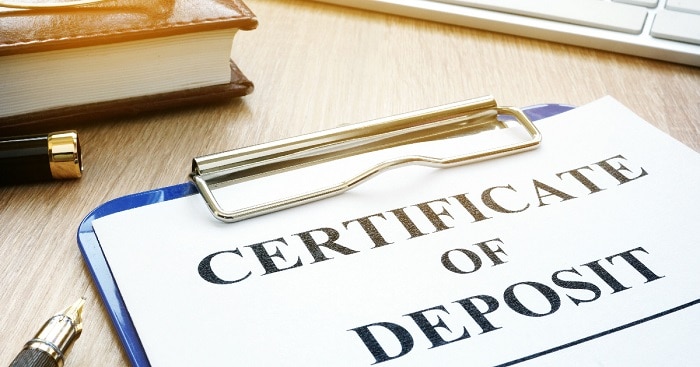
Types of CDs
CDs operate in the same way, but a few variations to some of their features bring rise to different types. It is necessary to know these types before picking a suitable one. Read on;
-
No Penalty CDs
These are also referred to as liquid CDs and come in different forms. They are relatively new and are offered in the spirit of financial institutions providing diversified products to their clients, even if they are somehow different from the traditional ones.
CDs are supposed to come with a fixed rate and a huge penalty if you cash out before the predetermined period elapses. Liquid CDs are different and allow you to withdraw your cash at any time without incurring the hefty penalties. This option will enable you to transfer funds to a higher paying CD when the chance presents itself, but there is a cost to it.
These CDs offer a lower interest rate compared to the traditional ones. It makes sense from the financial institutions’ point of view since they won’t invest the money with the confidence that you won’t cash on it if you can do this any time you want.
However, the opportunity to transfer the funds to a higher paying CD leaves your options open. Several other restrictions and terms that come with these CDs and ensure you understand them before taking up one.
-
Bump-Up CDs
These CDs are somehow related to liquid CDs. You are not forced to stick to allow yield CD, and if the bank offers better-paying ones, you can switch to those ones. You might be forced to notify the bank of this change.
The number of ‘bump-up’ switches you can make is limited, and these CDs payout lower interest rates than the traditional ones. Going for bump-up CDs is a risk since you can gain more when better-paying ones pop up, but you run the risk of earning less when you are forced to stick with one for the predetermined period.
-
Step-Up CDs
These CDs come with scheduled interest rate step-ups say for every 6 months. They are designed to increase the amount you gain, the more prolonged the financial institution has your money, and you won’t be resigned to low-interest rates from the word go. The rate of increment depends on the length of the CD term.

-
Brokered CDs
These are alternatives to traditional CDs in that you do not deal with a financial institution directly. Here, you buy CDs in brokerage accounts from different banks and pick one from the available selection. They give you a chance to juggle between various CDs, but some of them come with unclear terms and hence, more risks. Breaking free from a brokered CD can be difficult.
-
Mega CDs
Just as the name says, these are CDs with a high minimum balance. They are designed for people with vast amounts of money, say over $100,000, and the interest rate is significantly higher. These CDs are FDIC insured due to the immense amounts saved and offer an attractive rate over the predetermined term.
How Does A CD Work?
Opening a CD is no different from opening a savings account at any financial institution. The only difference is the terms that you agree to. Assuming you have already shopped around for a suitable CD, it is vital to understand a few phrases before appending your signature. The process will simply look at these four things.
- The interest rate is fixed, and locked ones are great in that you can calculate the return at the end of the period. However, you risk gaining less if the rates increase later on.
- The term is how long the financial institution will hold your money. The period ends on the ‘maturity date,’ and here, you can withdraw the money plus the accrued interest.
- The principal is the amount you deposit with the financial institution at the beginning.
- The institution is the entity that you will deposit the money with and will determine the terms of the CD from the onset.

The CD will have several terms and conditions that you will need to read and understand carefully before signing up for one. Once you deposit the amount and agree to the terms, the CD becomes active.
CDs are FDIC insured, and they are very low risk. You might want to confirm this with the financial institution you are taking one from.
Once the CD matures, you get to decide what to do with the money. The financial institution will notify you as this date approaches for you to plan on what next. They could give you several options, such as to reinvest the total amount on another CD.
This happens if you do not respond to their notifications since they assume that you want them to keep the money safe and will reinvest it in a CD with the same terms as the initial one.
Understanding the CD Ladder Strategy
One of the significant risks associated with investing in CDs is that you cannot benefit from increased rates if you invest all your capital in a long-term CD. This way, the ladder strategy helps to address this matter and offers you a better way of earning more from the investment. CD ladders should be approached with care, and once you understand how to do it, you will be well on your way to earn more with CDs.
Take a scenario where you have $50,000 and want to invest in CDs. Typically, it would appear that investing the entire amount in a long-term CD will yield the highest return. However, this CD could be a low paying one, and if the rates increase, you might be required to stick to this CD until the 5-year term comes to an end.
Rather than investing the entire amount, you can start with investing a portion of this money in a short-term CD, for instance, a 6 month one. You can then invest another portion in a midterm one, say a 1 year one and finally the remaining amount in the long term one, say 5 years.
We will use the mentioned investment to explain what is a simple ladder. Note that CD ladders can be complicated than this. Assuming that six months have elapsed and you do not need the matured amount.
The financial institution will give you the option of buying another 6-month CD, or you can commit to one year, as the midterm CD will mature in just 6 months. If you buy a full year CD, you will receive money after the first and the following 6 months. This way, you can access money every 6 months while still buying full-year CDs.

Over five years, you will have racked up more returns from the short- and medium-term CDs than what you would have gained had you invested the entire amount in a 5-year CD.
CD ladders are a good way of getting the most out of your investment while still making sure that you have some money at hand. This way, you won’t be forced to cancel your CD contract when hit with a financial emergency and pay the hefty penalties.
One of the notable downsides of laddering CDs is the probability of falling rates. Well, CD rates are always increase over the long term, but you cannot make an accurate prediction of how they will be like in the coming year.
If the CD rates fall as time goes, it becomes challenging to ladder them. The mentioned strategy works well when the interest rates are static or rising. When they are falling, there is a risk that the average returns will be more or less equal to a single long-term CD.
The distinct advantage of buying a long-term CD is the limited access to cash, and here is where laddering comes in handy. You can always have some money to sort out your financial issues.
How Long Should Your Ladders Be?
There is no definite answer to this question, as it all goes down to your investment strategy. Do not invest in a CD ladder blindly and always make calculations to ascertain that you will earn more than what you would have done with a single long term one.
Your timing is vital, and most people stop at three or five years. If you are locking your money for a long time, make sure that you won’t need it before the period elapses. It is advisable to consult a reputable financial planner who will help you to come up with a sound investment strategy.
When looking at how far apart the rungs should consider all the things involved. The best way is to go with one-year CDs. If the period is too short, the project becomes high maintenance due to the variables involved.
It takes more work to keep on working on CDs every three months, especially if you have other things to do. A good way of going about them is to get creative with the ladders and keep tabs on the market.
Once your ladder becomes more complex, it is easy to forget about the maturity dates. Some financial institutions will automatically renew your CD, and you do not want to find yourself locked in terms that do not represent your investment strategy and interests.

Tips for Picking the Best CD
With so much involved around CDs, it can be hard for you to pick the most suitable one for your investment goals. Here are some things to look out for when considering which CD is ideal for your investment strategy.
1. Consider the term
Depending on your investment strategy and financial needs, it might be unsuitable to lock all your money for an extended period. This way, the term is always an important thing to watch out for. When you lock the money for a long time and then withdraw the whole amount before the duration elapses, you will incur an early withdrawal penalty.
Consider how long you want to invest the money, and this depends on what you want to do with the matured amount at the end of the period. If you are saving for a vacation or want to but a car, short term CDs might be the best option. However, if you are looking at low-risk retirement savings, you might be better off with the long-term CDs.
2. Compare interest rates
When investing in a CD, you will most likely want to get the most out of it. This way, it helps to compare the interest rates offered by various financial institutions. The idea is to land a CD with a high annual percental yield.
Financial institutions will have different terms regarding the interest rates and ensure that you understand them before picking one. You can find banks that offer high APRs but notice that the terms and conditions are not favorable for your investment strategy. Do not analyze the rates blindly and try to make an actual calculation of how much you will have at the end of the period.
3. Watch out for the hikes
Once you start investing in CDs, it is in your best interest to check the market regularly and watch out for any potential hikes in the interest rates. You can find this information by reading what the financial experts predict. Once you have a rough idea of how the rates will be like in the coming year, it becomes easier to know whether you should invest in a short, medium- or long-term CD.

4. Explore the options
It has been mentioned that there are different types of CDs, such as the bump up, brokered, and jumbo among others. All these CDs have their benefits and downfalls. It helps to compare them and find one that suits your investment goals.
The ones that offer a lot of flexibility will definitely compensate for this by offering reduced interest rates and always take note of this. You might be forced to compromise when choosing between the different types.
5. Consider CD Laddering
CD laddering has been seen as an effective way of keeping your options open when investing in CDs. If you want to gain more and still have access to some money after a few months, CD laddering is the way to go.
Note that CD ladders might force you to take an active role in the investment by continually analyzing market trends and picking out the best ladders to commit in. The only downside with CD ladders is that if the rates fall, you might end up gaining less or slightly more than what you would have earned had you committed to a single long-term CD.
6. Check Minimum Deposit Requirements and Withdrawal Fees
All the CDs have different minimum deposit requirements and always look into this before committing to one. It depends on the amount you want to invest in the CD, and if it is below the minimum requirement specified by the financial institution, you will not be able to invest in that CD.
Note that banks that offer the best CD rates in the market are among those that have the highest minimum deposit requirements. This way, the more you invest, the higher the rates you can choose from.
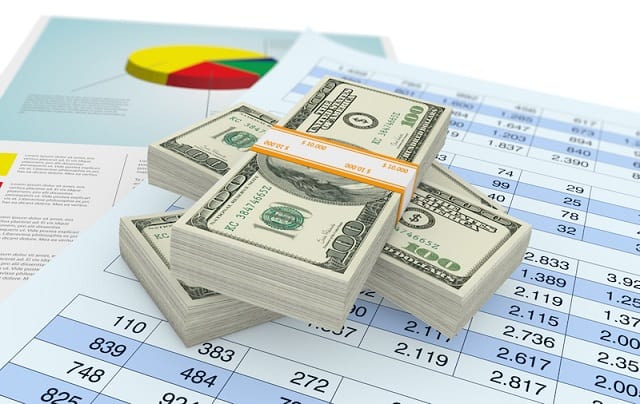
It is well known that withdrawing your money before a CD matures will subject you to hefty penalties. These penalties vary from one institution to another and ensure that you take note of this amount.
In some cases, the unpredictable happens, and you are forced to withdraw money from your CD. If the institution you are investing in has lower early withdrawal rates, it becomes advantageous since you can always take the bullet, withdraw money from the CD and reinvest it in a better one or any other investment opportunity.
7. Avoid Automatic Rollovers
When you invest in a long-term CD or in several short-term ones, it can be hard to keep tabs on all of them. This is particularly applicable if you have other things to worry about, such as your day job. Once a CD reaches maturity, you can cash out, or the bank will automatically roll over the amount to a similar CD.
This is not always the best option as the rates might have increased in that financial institution or another. As your CD maturity date approach, analyze all the available options and decide where to invest the money in.
From the list, you will need to look into a couple of factors before picking a suitable CD. Take your time as investing in a CD is a huge decision that should help you achieve your investment goals.
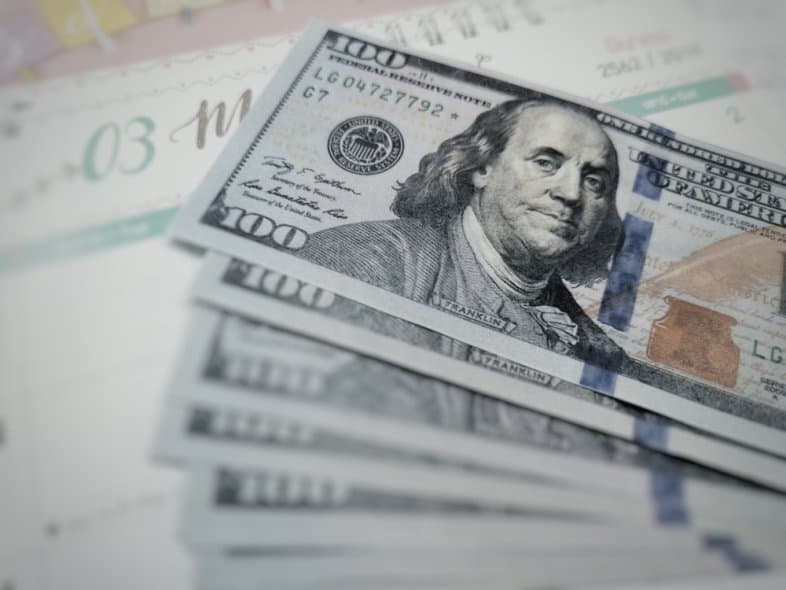
My Top Recommendations
Best 1-month CDs
1. Colorado Federal Savings Bank
If you want to invest your money in what could be the shortest CD available, consider doing it at Colorado Federal Savings Bank. This bank offers an APY of 0.50% for a minimum deposit of $5000. Aside from providing what could be the best one-month CD, they offer a wide variety of competitive investment products as well.
The institution is based in Colorado, but you can buy a CD from any part of the United States. A one-month CD would give you access to money within a short time and save you from hefty early withdrawal fees if you had chosen to invest in a long-term CD.
2. Presidential Bank, FSB
This bank offers a competitive rate on its one-month CD and other financial products. They have limited their number of physical branches and instead focused on improving the quality of financial services offered.
You can get a one-month CD with an APY of 1.00% for a minimum deposit of $1000. The bank is based in Maryland and has several branches within the DC area.
Best 3-month CDs
1. Vanguard
Vanguard offers one of the best 3-month CDs in the market, albeit for high net individuals. It provides these CDs at an APY of 3.00% for a minimum deposit of $10,000. It is one of the largest investment firms in the world, and placing your assets with them is a good idea considering how respectable they are.
Note that for their CDs, the interest does not accumulate in the account as it is linked to a money market account. Their CDs are also sold through a brokerage firm.
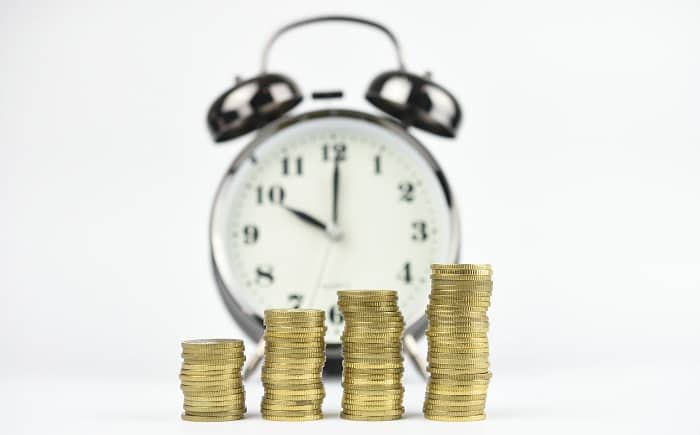
2. Fidelity
Fidelity offers an impressive brokered 3-month CD with several advantages such as FDIC insured and a competitive APY of 2.00%. There are no monthly fees associated with opening a CD with them, and they offer you an early withdrawal option at favorable terms. The minimum deposit for these CDs is $1000.
Best 6-month CDs
1. First Internet Bank of Indiana
This is a fully online bank. It is based in Indiana but serves clients across the states. It offers a competitive APY on all of its CD products, but what stands out is the 6-month CD. Its APY is at 2.19% for a minimum deposit of $1000.
There are no maintenance fees for the CD, and it is renewed automatically if you do not want to cash out the matured amount at the end of the term. This bank will charge you a penalty for early withdrawals for the first 180 days of the CD term, for the longer CDs.

2. CommunityWide Federal Credit Union
Credit Unions are becoming popular because they offer better terms than conventional banks. This union offers a competitive rate on its 6-month CD. The APY is at 2.35%, and if you are to qualify for that, you will need to open an account with a minimum amount of $1000. You need to a communitywide member to be eligible for this CD as well.
Best 1-year CDs
1. Capital One 360
The Capital One 360 one-year CDs are one of the best for two reasons. One, the APY is 2.49%, which is a very competitive rate, and secondly, the minimum balance is a meager $1. This CD offers a combination of flexibility in terms of the rates for individuals who cannot meet the high $1000 or $5000 minimum deposits set by many financial institutions.
2. Alliant Credit Union
Alliant credit union offers a competitive one-year CD with a low minimum balance for people who want to invest in CDs and do not have a lot of money. The one-year CD at this union offers a solid 2.40% APY with a minimum deposit of $1000. The dividends compound monthly, and you won’t be charged a single cent to open and run the CD.
Best 3-year CDs
1. Barclays
Barclays offers an impressive 3-year CD with no specified minimum deposit. The APY for this CD is 2.55%, and it is one of the best rates in the market. It is FDIC insured and has no hidden fees that reduce the matured amount at the end of the term.
There are several long-term CDs available if you are not intent on sticking with a 3 year one. Barclays has a well-built online CD calculator that helps you to get a definite figure of how much you will earn at the end of the term.
2. American Express
American Express is widely known for its credit card services but did you know that it offers one of the best 3-year CDs in the market. The rates for this CD are impressive, with an APY of 2.25% with no minimum deposit.
The interest compounds daily, and you can check this amount on your account every month. The money is FDIC insured, but note that American Express has no physical branches.

Best 5-year CDs
1. Northpointe Bank
Northpointe Bank offers what could be the best 5-year CD with a low minimum deposit and health APY. It managed to do this since it is a client-focused bank that still managed to provide good value for its stakeholders. Their 60-month CD offers excellent value with an APY of 2.70 percent and a minimum deposit of $1000.
2. Popular Direct
This institution offers the best 60-month CD for big investors. These CDs gain interest at an APY rate of 2.55 percent with a minimum deposit of $10,000. They have a ten-day rollover period once the CD matures and you can decide to invest the money in a different one or withdraw the funds.
This bank is specialized in helping you to grow wealth as it only offers CD and savings accounts.
Best 10-year CDs
1. Discover Bank
Discover Bank is a reputable brand in the financial niche, and it is no surprise seeing it among the top recommendations for long term CDs. It offers one of the best 10-year CD with a 2.70 percent APY for a minimum deposit of $2500.
Note that this bank is an online one with its only branch located in Greenwood, Delaware. Interest can be withdrawn before the CD reaches its maturity date, and the money is FDIC insured.
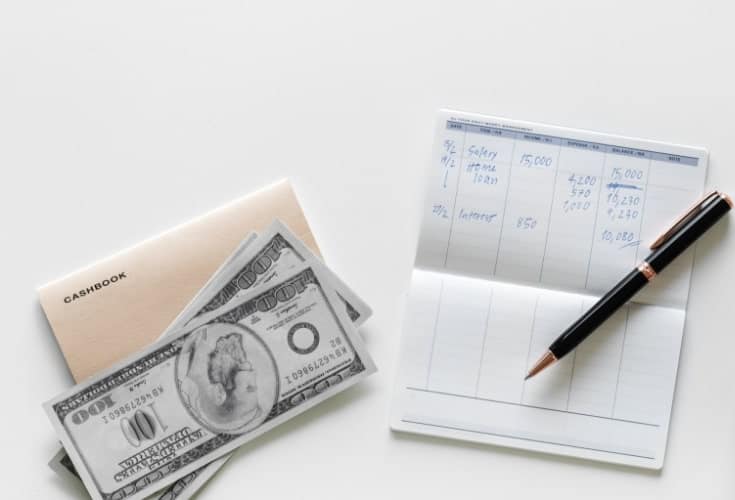
2. LegacyTexas Bank
This bank offers services to people outside Texas and has one of the best 10-year CDs. You can set up a CD with just $1000 for an APY of 2.75 percent.
CD vs. Savings Account; When to Use Either
Both CDs and savings accounts offer you a safe place to keep your money while earning some interest. However, they have a few distinct features that make them suitable for different scenarios. This way, it helps if you understand when to use either and that will be clearer once we list down the pros and cons of each of them.
Pros of CDs
There are two main advantages of picking a Certificate of Deposit. One notable one is guaranteed safety. The FDIC insures CDs up to $250,000, and due to this, you cannot lose your principal amount under any circumstance. The investment is less risky than stocks, bonds or any other form of investment. Make sure that the CD you invest in is FDIC insured.
When you compare the interest rates offered by CDs and savings accounts, there is no doubt that CDs offer you the best rate. This is because you give the financial institution your money for a fixed period and this allows them to reinvest the money with the assurance that you won’t come for it before the agreed term elapses.
If you chose to get the money before the duration elapses, they will charge you a penalty that will cater for the risk on their side. You can use smart strategies when investing in CDs, such as laddering, to get the most out of your investment. Generally, CDs will yield you much more than a savings account especially if you get creative with the venture.
Cons of CDs
One major downside with CDs is that you cannot access your money freely until the end of the agreed term. Well, financial institutions offer flexible choices for CDs that allow you to access cash before the agreed time elapses, but such features come at the cost of reduced interest rates. This way, traditional CDs with high rates have the restriction of accessing money midway through the term.
If you encounter a financial emergency or find a better investment opportunity, you cannot access the money straight away. This way, once you invest in a CD and commit to it for a certain period, you need to wait until this term ends for you to access the funds.

Pros of Savings Accounts
First, savings accounts are a safe place to invest money for the short and long term. The federal government insures your savings accounts, and there is a very minimal risk of you losing the amount.
Another advantage of these accounts is that you can access your money anytime unless you have bypassed the withdrawal limit for a certain period, say a year. This keeps your options open, and you can take the funds and reinvest it in another venture if it comes by. You can transfer the money to your checking account or to another account via electronic transfer.
Savings accounts accrue interest, albeit lower than those for the CDs. This way, small additions are made to your account monthly, and if you save for a long time, you could accrue a considerable amount in interest while still having access to your money.
Downsides of Savings Accounts
Savings accounts pay out interests, but this rule is not all that clear. Most financial institutions pay interest on deposits above a certain minimum amount. With the flexibility associated with savings accounts, it is common to have an amount that is below the minimum one after withdrawing some of it, and this reduces the net gain at the end of the savings period. Savings accounts might include maintenance and withdrawal fees that make them high maintenance when compared to CDs.
The interest rates associated with savings accounts are relatively lower than those that apply to CDs, and even without factoring in the maintenance fees, you cannot gain as much as you would have had you invested in a CD.

Which is the Best Option?
When picking between CDs and savings accounts, the answer depends on two factors, which are ease of access and interest rates.
CDs reward you for committing to give the banks your money for a specified term without asking for it. They are perfect if you want to use the money at a future date since you can buy a CD and time it to mature on that date.
For instance, if you’re going on vacation in 6 months, it makes sense buying a 6-month CD and allow it to accrue interest until when you will need it. In a nutshell, it is suitable for people that want to store money that they have no plan of spending until the matured period elapses.
The guaranteed rates allow you to plan for the matured amount since you can use online calculators to know how much you will get at the end of the term. CD ladder strategies are a great way to avoid being stuck with low rates.
Savings accounts offer you lower rates but keep your options open. The government limits the number of withdrawals on savings accounts. These accounts are best if you might need to use the money at any time. For instance, they might offer you a nice place to store money that you will need once your daily usage funds are exhausted, and you do not want to get an overdraft.
The zero minimum balances on savings accounts allow you to build on the account and grow the amount to a larger figure especially if you need the cash to buy or invest in something after some time.
Frequently Asked Questions
If you are not planning to do anything else with your money, compared to other types of savings accounts, certificates of deposit are definitely worth it because they have higher interest over a savings account.
Typically anything above or 3% APY is considered a really good rate, but, you’ll find most of the time that the average APY that most offer is around %1.2.
Unless you have a retirement account such as an IRA, the interest you earn from when your CD matures it is considered to be a taxable income by the IRS
Savings account have no time commitment so if you are not planning to have your money within a hand’s reach for withdrawal and spending you should certainly store your cash in a Savings Account, but, on the other hand, if you have cash that you won’t be touching for a while, CDs might come as the better option.
CDs are a safe investment and they can even provide a stable income. The only thing that you need to consider before purchasing CDs is how much money you might need in the future for transactions or withdrawals.
We recommend having at least two savings accounts, one for saving and the other one for checking.
The Final Verdict
It has been seen that CD and savings accounts are all suited for different scenarios. Fortunately, you do not have to choose either as you can have both CDs and savings accounts.
Have a savings account and keep enough cash in it to meet any short term needs, and this way, you won’t be faced with the penalties associated with early withdrawals from CDs.
If you come across some money that you do not need, invest it in a CD and let it accrue interest as you figure out how to spend it.
Recommended Reads
- Wells Fargo vs Bank of America: Which is the Better Bank?: Wells Fargo vs Bank of America: both similar banks. Today we point out their key differences you need to consider before selecting the right one for you.
- Simple Bank Review: Is It the Best Online-Only Bank for You?: New and growing online-only banking option. Check out our Simple Bank Review to find crucial information you need to consider before you opt for it.
